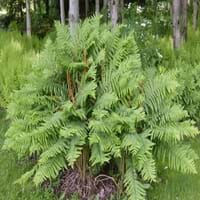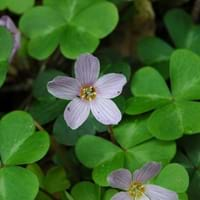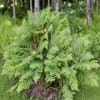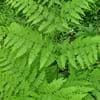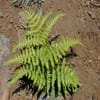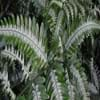Life Span
Perennial
Perennial
Origin
North America, Caribbean, Eastern Asia
Western United States, Canada
Types
Not Available
not available
Habitat
Boggy areas, By seashore, Coastal Regions, Moist woods, Swamps
Moist woods, Redwood forests
USDA Hardiness Zone
2-10
7-9
Sunset Zone
1a, 1b, 2a, 2b, 3a, 3b, 4, 5, 6
4, 5, 6, 7, 8, 9, 14, 15, 16, 17, 18, 19, 20, 21, 22, 23, 24
Habit
Upright/Erect
Spreading
Flower Color
Yellow Brown
White, Purple, Pink, Lavender
Flower Color Modifier
Bicolor
Bicolor
Fruit Color
Light brown
Not Available
Leaf Color in Spring
Green
Green
Leaf Color in Summer
Green
Green
Leaf Color in Fall
Yellow, Green
Green
Leaf Color in Winter
Not Available
Light Green
Leaf Shape
Pinnate
Heart-shaped
Plant Season
Spring, Summer, Fall
Spring, Summer, Fall, Winter
Sunlight
Full Sun, Partial shade
Partial Sun, Partial shade, Full Shade
Growth Rate
Fast
Very Fast
The pH of Soil
Acidic, Neutral
Acidic, Neutral
Soil Drainage
Average
Average
Bloom Time
Not Available
Early Spring, Spring, Late Spring, Early Summer, Summer, Late Summer, Early Fall, Fall
Tolerances
Drought, Wet Site
Drought
Where to Plant?
Container, Ground
Container, Ground, Pot
How to Plant?
Divison, Spores
Divison, Seedlings
Plant Maintenance
Medium
Low
Watering Requirements
Requires a lot of watering, Requires regular watering, Requires watering in the growing season, Water Deeply
Average Water Needs, Medium
In Summer
Lots of watering
Ample Water
In Spring
Moderate
Adequately
In Winter
Average Water
Moderate
Soil pH
Acidic, Neutral
Acidic, Neutral
Soil Drainage Capacity
Average
Average
Sun Exposure
Full Sun, Partial shade
Partial Sun, Partial shade, Full Shade
Pruning
In late autumn, Remove dead or diseased plant parts
Remove damaged leaves, Remove dead branches, Remove dead leaves
Fertilizers
slow-release fertilizers
All-Purpose Liquid Fertilizer
Pests and Diseases
Insects, Red blotch
Red blotch
Plant Tolerance
Wet Site
Drought
Flower Petal Number
Single
Single
Foliage Texture
Bold
Medium
Foliage Sheen
Matte
Matte
Attracts
Insects
Not Available
Allergy
Avoid during Pregnancy, coma, Eye irritation, weakness
Not Available
Aesthetic Uses
Beautification, Landscape Designing, Showy Purposes
Ground Cover
Beauty Benefits
Good for skin, Not Available
Not Available
Environmental Uses
Air purification, No fertilizer, pesticides, or herbicides needed, Shelter for wildlife
Air purification, Provides ground cover
Medicinal Uses
Nutrients
Antirheumatic, Boils, Opthalmic, Rheumatism, Sore Eyes, Swelling
Part of Plant Used
Leaves
Flowers, Leaves
Other Uses
Air freshner, Decoration Purposes, Employed in herbal medicine, Showy Purposes, Used for its medicinal properties
Culinary use, Employed in herbal medicine, Used As Food, Used for fragrance
Used As Indoor Plant
Yes
No
Used As Outdoor Plant
Yes
Yes
Garden Design
Bog Garden, Edible, Mixed Border, Water Gardens, Wildflower
Groundcover, Wildflower
Botanical Name
OSMUNDA cinnamomea
OXALIS oregana
Common Name
Cinnamon Fern
Redwood Sorrel
In Hindi
दालचीनी फर्न
Redwood Sorrel
In German
Zimt Farn
Redwood Sorrel
In French
Cinnamon Fern
Redwood Sorrel
In Spanish
helecho canela
Redwood alazán
In Greek
κανέλα Fern
Redwood Sorrel
In Portuguese
Cinnamon Fern
Redwood Sorrel
In Polish
Cynamon Fern
Redwood szczaw
In Latin
Fern cinnamomum
Rumex Redwood
Phylum
Pteridophyta
Magnoliophyta
Class
Polypodiopsida
Magnoliopsida
Order
Osmundales
Geraniales
Family
Osmundaceae
Oxalidaceae
Genus
Osmundastrum
Oxalis
Clade
Not Available
Angiosperms, Eudicots, Rosids
Tribe
Apameini
Not Available
Subfamily
Noctuinae
Not Available
Number of Species
Not Available
Not Available
Properties of Cinnamon Fern and Redwood Sorrel
Wondering what are the properties of Cinnamon Fern and Redwood Sorrel? We provide you with everything About Cinnamon Fern and Redwood Sorrel. Cinnamon Fern doesn't have thorns and Redwood Sorrel doesn't have thorns. Also Cinnamon Fern does not have fragrant flowers. Cinnamon Fern has allergic reactions like Avoid during Pregnancy, coma, Eye irritation and weakness and Redwood Sorrel has allergic reactions like Avoid during Pregnancy, coma, Eye irritation and weakness. Compare all the properties and characteristics of these two plants. Find out which of these plant can be used as indoor plant. If you are interested to decorate your house and garden, find out aesthetic uses, compare them and select the plant which will beautify your surrounding. Along with beautification, try comparing medicinal and edible uses of Cinnamon Fern and Redwood Sorrel and you can choose the plant having best and most benefits.
Season and Care of Cinnamon Fern and Redwood Sorrel
Season and care of Cinnamon Fern and Redwood Sorrel is important to know. While considering everything about Cinnamon Fern and Redwood Sorrel Care, growing season is an essential factor. Cinnamon Fern season is Spring, Summer and Fall and Redwood Sorrel season is Spring, Summer and Fall. The type of soil for Cinnamon Fern is Loam and for Redwood Sorrel is Loam while the PH of soil for Cinnamon Fern is Acidic, Neutral and for Redwood Sorrel is Acidic, Neutral.
Cinnamon Fern and Redwood Sorrel Physical Information
Cinnamon Fern and Redwood Sorrel physical information is very important for comparison. Cinnamon Fern height is 60.00 cm and width 60.00 cm whereas Redwood Sorrel height is 10.20 cm and width 30.00 cm. The color specification of Cinnamon Fern and Redwood Sorrel are as follows:
Cinnamon Fern flower color: Yellow Brown
Cinnamon Fern leaf color: Green
Redwood Sorrel flower color: White, Purple, Pink and Lavender
- Redwood Sorrel leaf color: Green
Care of Cinnamon Fern and Redwood Sorrel
Care of Cinnamon Fern and Redwood Sorrel include pruning, fertilizers, watering etc. Cinnamon Fern pruning is done In late autumn and Remove dead or diseased plant parts and Redwood Sorrel pruning is done Remove damaged leaves, Remove dead branches and Remove dead leaves. In summer Cinnamon Fern needs Lots of watering and in winter, it needs Average Water. Whereas, in summer Redwood Sorrel needs Ample Water and in winter, it needs Moderate.
